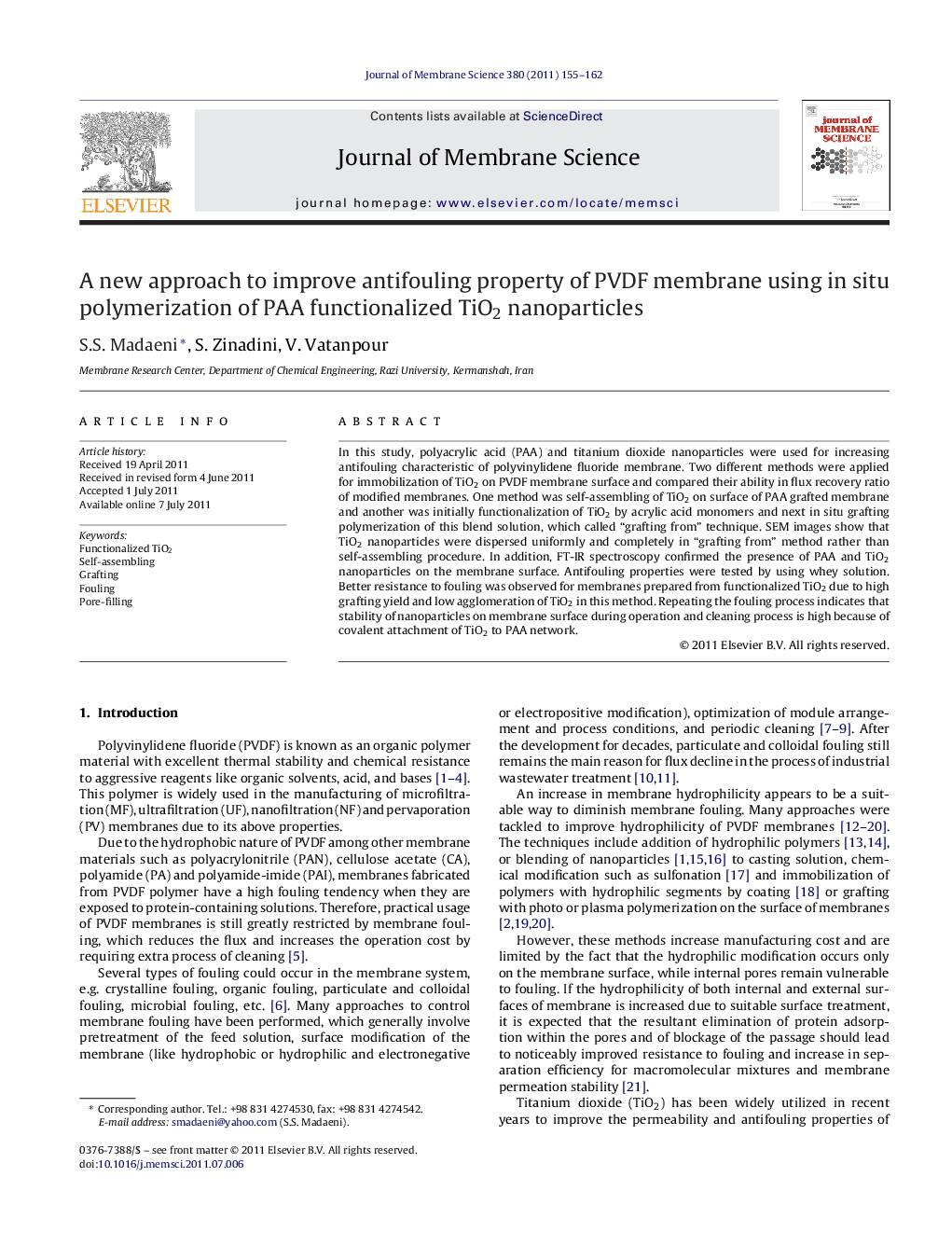| Article ID | Journal | Published Year | Pages | File Type |
|---|---|---|---|---|
| 635231 | Journal of Membrane Science | 2011 | 8 Pages |
In this study, polyacrylic acid (PAA) and titanium dioxide nanoparticles were used for increasing antifouling characteristic of polyvinylidene fluoride membrane. Two different methods were applied for immobilization of TiO2 on PVDF membrane surface and compared their ability in flux recovery ratio of modified membranes. One method was self-assembling of TiO2 on surface of PAA grafted membrane and another was initially functionalization of TiO2 by acrylic acid monomers and next in situ grafting polymerization of this blend solution, which called “grafting from” technique. SEM images show that TiO2 nanoparticles were dispersed uniformly and completely in “grafting from” method rather than self-assembling procedure. In addition, FT-IR spectroscopy confirmed the presence of PAA and TiO2 nanoparticles on the membrane surface. Antifouling properties were tested by using whey solution. Better resistance to fouling was observed for membranes prepared from functionalized TiO2 due to high grafting yield and low agglomeration of TiO2 in this method. Repeating the fouling process indicates that stability of nanoparticles on membrane surface during operation and cleaning process is high because of covalent attachment of TiO2 to PAA network.
Graphical abstractFigure optionsDownload full-size imageDownload high-quality image (272 K)Download as PowerPoint slideHighlights► TiO2 self-assembling and “grafting from” methods were used for preparing antifouling membrane. ► Functional groups of PAA and photocatalytic characteristic of TiO2 reduced membrane fouling. ► The “grafting from” method was better than self-assembling for immobilization of nanoparticles. ► UV irradiation of PAA/TiO2 modified membranes resulted in improving the flux recovery ratio.
